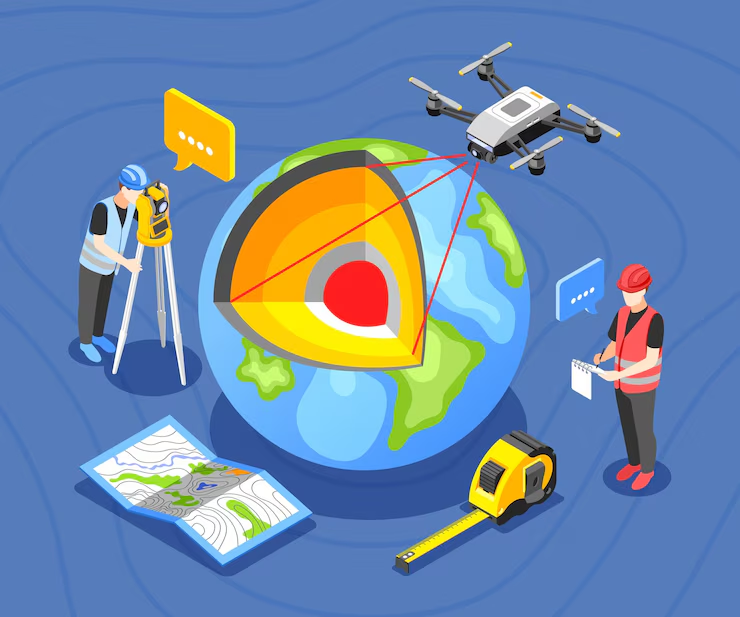Google Earth is one of the most fascinating tools available for exploring our planet. It allows users to view satellite imagery, 3D terrain, and street-level views of almost any location on Earth. However, one common question many users have is: how often does Google Earth update photos?
In this guide, we will explore the update frequency of Google Earth imagery, factors that influence updates, how you can check the dates of photos, and what to expect from future improvements. Let’s get started.
What Is Google Earth?
Before we dive into the updates, it’s important to understand what Google Earth actually is.
Google Earth is a digital globe that displays satellite imagery, aerial photography, and geographic data. It allows users to:
- Explore any location on Earth.
- Zoom in and out of maps with detailed visuals.
- View historical imagery from past years.
- Create custom maps and 3D renderings.
Whether you’re planning a trip or satisfying your curiosity, Google Earth offers a unique experience.
How Often Does Google Earth Update Photos?
The frequency of updates varies widely based on location, popularity, and availability of new imagery. So, how often does Google Earth update photos?
Here’s a general overview:
- Urban areas: Often updated every 1 to 3 years.
- Rural or remote areas: May only be updated every 3 to 5 years.
- High-interest zones (natural disasters, major events): Can receive more frequent updates.
Factors That Affect Update Frequency
Several factors influence how often Google Earth updates photos:
1. Population Density
Densely populated areas are prioritized. Cities like New York, London, or Tokyo get updated more often than remote deserts or forests.
2. Availability of New Imagery
Google depends on satellite companies and aerial data providers. If no recent imagery is available, the update gets delayed.
3. Weather and Cloud Coverage
Satellites require clear skies to capture usable images. If weather conditions are poor, updates are postponed.
4. Budget and Resource Allocation
Some areas are updated more often because Google allocates more resources there. Areas with fewer users might not get frequent updates.
5. Strategic or Event-Based Interest
Places affected by natural disasters, political events, or infrastructure changes may get temporary priority.
How to Check the Date of an Image in Google Earth
Curious to know when a photo was taken? Here’s how to check:
- Open Google Earth Pro (free to download on desktop).
- Search for a specific location.
- Hover over the area you’re viewing.
- The imagery date appears in the bottom corner of the screen.
- You can also use the Historical Imagery tool to view past images.
This is especially useful for comparing how an area has changed over time.
Google Earth vs. Google Maps: Are Updates the Same?
Although both platforms use similar imagery, they have different purposes and update frequencies.
- Google Maps: Focuses more on navigation and roads. Updates are more frequent in populated areas.
- Google Earth: Provides a broader view, with updates tailored more toward imagery and terrain.
So, even if Google Maps shows a recent update, Google Earth might still use older photos.
Why Some Areas Appear Outdated
Now that you understand how often does Google Earth update photos, you might wonder why certain images seem old.
Reasons include:
- Remote locations with low user interest.
- Limited satellite or aerial coverage.
- Poor weather on recent passes.
- Licensing and data processing delays.
Google doesn’t manually update each area. Updates rely on bulk imagery uploads and automated systems.
How to Request an Update on Google Earth
While there’s no guarantee, users can provide feedback:
- Open Google Earth.
- Click the menu icon and select Feedback.
- Describe the issue and request an update.
Although Google doesn’t respond directly, they consider user input when planning updates.
Understanding the Types of Imagery
Different types of photos are used in Google Earth, each with its own update schedule.
1. Satellite Imagery
- Captured by satellites orbiting Earth.
- Covers large areas.
- Resolution varies (can be blurry in remote places).
2. Aerial Photography
- Taken by planes flying at low altitudes.
- Higher resolution than satellite images.
- Usually reserved for cities and urban zones.
3. Street View
- Captured using Google’s camera cars or trekker systems.
- Updates depend on road conditions and accessibility.
Knowing what kind of image you’re viewing helps set expectations for updates.
Tools to Monitor Google Earth Updates
There are ways to monitor when new images appear:
Google Earth Blog
Google previously maintained a blog to announce updates. Though no longer active, it still contains helpful historical data.
Google Earth Pro Historical View
Use the Historical Imagery slider to compare changes and track update patterns.
Community Forums and Reddit
Many enthusiasts share news and tips on updates. Keep an eye on tech forums for insights.
How Accurate Are Google Earth Photos?
Another key question beyond how often does Google Earth update photos is about accuracy.
In general:
- Photos are usually accurate to within a few meters.
- Dates and shadows may cause slight discrepancies.
- Terrain and height data can sometimes cause visual distortions.
Despite small imperfections, Google Earth remains a powerful visual tool.
Upcoming Developments and AI Integration
Google is integrating AI and machine learning to:
- Improve image clarity.
- Automatically detect changes.
- Prioritize areas with dynamic development.
These innovations may reduce the delay between photo capture and upload, making updates faster.
Frequently Asked Questions
Can I see real-time images in Google Earth?
No. Google Earth does not offer real-time satellite imagery. Most images are several months or years old.
How can I get the most recent photo of my house?
Try using Google Maps Street View or services like Zoom Earth, which shows near-real-time satellite data.
Are updates different for mobile and desktop?
Yes. Desktop (Google Earth Pro) often provides more tools and access to historical imagery.
Can I contribute my own images?
You can’t upload to Google Earth directly, but you can contribute to Google Maps through the Local Guides program.
Conclusion
So, how often does Google Earth update photos? The answer depends on your location and various external factors. Urban and high-interest areas may receive updates every year, while rural regions might wait several years between updates.
Understanding these dynamics helps you make the most of this amazing tool. Whether you’re tracking changes in your neighborhood, planning a trip, or simply exploring the world, now you know what to expect from Google Earth’s imagery updates.
Stay curious, explore regularly, and check back for changes. The world is always evolving, and so is Google Earth.



